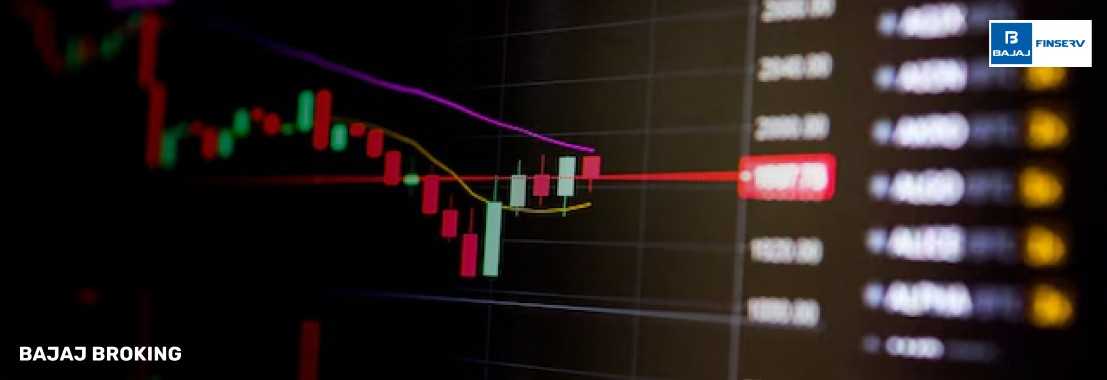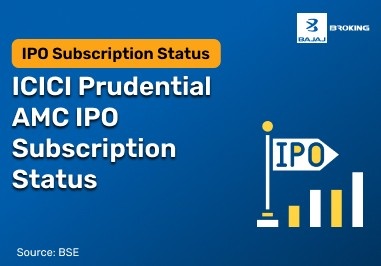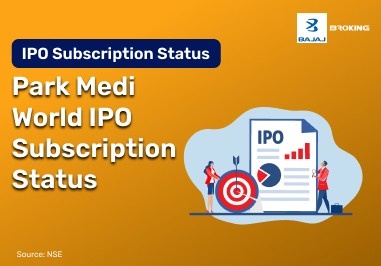A Displaced Moving Average (DMA) is a variation of traditional moving averages, such as the Simple Moving Average (SMA) and Exponential Moving Average (EMA). To understand what is DMA, it’s a tool adjusted or 'displaced' by a specific number of periods, either forward (positive displacement) or backward (negative displacement), on a stock chart. This adjustment helps traders better align the moving average with price trends, reducing lag and improving responsiveness to market movements.
The displaced moving average exists to improve trend-following analysis which makes it an essential tool within technical analysis. The forward or backward position of the moving average enables traders to predict upcoming price changes and adjust the average according to current market dynamics. The adjustable features enable traders to personalize their analysis according to their market requirements or their specific trading needs.
DMA is particularly useful for identifying market trends and support/resistance levels. When prices consistently trade above the displaced moving average, it signals an uptrend, while trading below indicates a downtrend. Additionally, DMA can generate trading signals; for instance, a bullish signal occurs when prices cross above the DMA, and a bearish signal arises when prices cross below it.
In short, DMA offers flexibility and precision in analyzing price trends, making it an essential tool for traders aiming to make informed decisions in dynamic markets.
Why is DMA Used In The Stock Market?
The Displaced Moving Average (DMA) is a widely utilized tool in the stock market for its ability to provide enhanced insights into price trends and market dynamics. To understand what is DMA, shifting the moving average forward or backward in time helps traders align their analysis with market movements more effectively. This adjustment reduces the lag commonly associated with traditional moving averages, such as SMA and EMA, making DMA particularly valuable for forecasting trends and identifying trading opportunities.
DMA serves as a primary indicator because it provides traders with more precise trend direction detection. The price trend becomes upward when it maintains a position above the displaced moving average yet indicates downward momentum when located beneath it. The identified trend signals enable traders to decide when to take long or short positions. The prediction of market reversals becomes possible through DMA because it matches historical price data with current market movements.
Another important use of the displaced moving average is identifying dynamic support and resistance levels. These levels help traders pinpoint areas where price movements are likely to reverse or accelerate, offering crucial insights for timing buy or sell orders. The flexibility of DMA makes it adaptable for both short-term and long-term analyses, enhancing its utility across diverse trading strategies.
Comparing DMA with Simple and Exponential Moving Averages
The Displaced Moving Average (DMA), Simple Moving Average (SMA), and Exponential Moving Average (EMA) are all tools used in technical analysis to understand market trends. To explore what is DMA, here’s a comparison of these averages:
Feature
| Displaced Moving Average (DMA)
| Simple Moving Average (SMA)
| Exponential Moving Average (EMA)
|
Calculation
| Calculates the average of past prices and shifts it by a specified number of periods.
| Assigns equal weight to all prices in the series.
| Gives more weight to recent prices.
|
Time Lag
| Can introduce a time lag due to displacement.
| No inherent time lag but can be slow to react to changes.
| Highly responsive with minimal time lag.
|
Sensitivity
| Less sensitive to recent price changes due to displacement.
| Equally sensitive to all price changes.
| Highly sensitive to recent price changes.
|
Use Cases
| Used for trend-following and reducing whipsaws. Ideal for customizing analysis to fit different trading styles.
| Commonly used for identifying long-term trends.
| Suitable for short-term trading strategies due to quick response to price changes.
|
Noise Reduction
| Less effective in reducing price noise compared to EMA.
| Reduces noise but can be slow to react.
| More effective in reducing price noise.
|
In summary, DMA offers flexibility by allowing traders to adjust the moving average to better fit market cycles, while SMA provides a straightforward view of trends and EMA reacts quickly to recent price movement.
Practical Applications of DMA in Trading Strategies
The Displaced Moving Average (DMA) is a versatile tool in trading strategies, offering traders a flexible way to analyze market trends and generate trading signals. Here are some practical applications of DMA:
Trend Identification and Signal Generation: To clarify what is DMA, it helps traders identify trends by aligning the moving average with price action. When the price crosses above the DMA, it signals a potential uptrend, while crossing below indicates a downtrend. This makes DMA useful for both long and short trading strategies.
Customization for Market Conditions: The displacement feature allows traders to adjust the displaced moving average to fit different market conditions. By shifting the moving average forward or backward, traders can better match the indicator with the current price action, reducing lag and improving responsiveness to market changes.
Dynamic Support and Resistance: DMA can serve as a dynamic support or resistance line. When the price approaches the DMA line, it may bounce back or break through, providing opportunities for traders to enter or exit positions.
Combination with Other Indicators: DMA can be combined with other technical indicators to enhance trading strategies. For example, using two DMA lines with different time frames can create crossover strategies that generate buy or sell signals when one line crosses over the other.
Breakout and Reversal Strategies: Traders use DMA to identify potential breakouts and reversals. A price close above the DMA line can signal a bullish breakout, while a close below it indicates a bearish one. Similarly, when the price crosses above or below the DMA, it can signal a reversal in the trend.
DMA offers traders a flexible and customizable tool for analyzing trends, identifying trading opportunities, and managing risk in dynamic markets. Its ability to reduce lag and align with price action makes it particularly useful for traders seeking to improve their trading performance.
Advantages of Using Displaced Moving Averages
The Displaced Moving Average (DMA) offers several advantages that make it a valuable tool for traders. To define what is DMA, one of its primary benefits is its flexibility, allowing traders to adjust the displacement based on their trading strategy and market conditions. This customization enables traders to better align the moving average with price trends, reducing the lag associated with traditional moving averages.
Improved Trend Identification: DMA helps in identifying trends more effectively by smoothing out price fluctuations and providing a clearer view of long-term trends. This is particularly useful for traders seeking to confirm whether a stock is in an uptrend, downtrend, or sideways movement.
Noise Reduction: By displacing the moving average, DMA reduces market noise, which is common in short-term price fluctuations. This allows traders to focus on the broader trend rather than minor price movements.
Customization for Strategy: The ability to adjust the displacement amount makes DMA highly adaptable to different trading strategies. Traders can use a leading DMA to anticipate price movements or a lagging DMA for a more conservative approach.
Dynamic Support and Resistance: DMA can act as dynamic support or resistance levels, indicating key points where the market might reverse or continue its trend. This helps traders identify potential entry or exit points.
Reduced Lag: Shifting the moving average forward can help traders anticipate future price movements, reducing the delay in responding to market changes. This makes the displaced moving average particularly useful in fast-moving markets where timely decisions are crucial.
Limitations of Using Displaced Moving Averages
While the Displaced Moving Average (DMA) offers flexibility and customization, it has several limitations that traders must consider before incorporating it into their strategies. To better assess what is DMA, these following drawbacks highlight the importance of understanding its nuances and avoiding over-reliance on this tool.
Lag Issues: Despite its ability to adjust for lag inherent in traditional moving averages, DMA does not entirely eliminate lag. In fast-moving markets, this limitation can result in delayed signals, potentially causing traders to miss opportunities or enter positions too late.
Subjectivity in Displacement: The choice of displacement period is subjective and varies among traders. This lack of standardization can lead to inconsistent interpretations and results, making it difficult to establish universally applicable strategies.
False Signals in Sideways Markets: DMA is less effective during range-bound or sideways markets, where price fluctuations frequently cross the displaced average. This generates false signals that can lead to unprofitable trades or unnecessary losses.
Over-Reliance Risk: Traders may risk over-dependence on DMA, neglecting other critical market factors like fundamental analysis and economic indicators. Such reliance can narrow their market perspective and increase exposure to overlooked risks.
Complexity Without Added Value: The additional parameters required for DMA—displacement period and look-back period—can complicate trading strategies without significantly improving forecasting accuracy. This complexity might deter traders seeking simplicity in their tools.
In conclusion, while DMA is a powerful tool for trend analysis, its limitations underscore the need for a balanced approach that incorporates other indicators and market considerations for effective decision-making.
Key Considerations When Using DMA in the Stock Market
When utilizing the Displaced Moving Average (DMA) in trading strategies, several key considerations must be taken into account to maximize its effectiveness and minimize potential drawbacks. Here are some essential pointers:
Adjusting Displacement Periods: The displacement period should be carefully chosen based on the trading strategy and market conditions. A small displacement might not offer significant advantages, while too large a displacement can lead to misleading signals.
Combining with Other Indicators: DMA should not be used in isolation. Combining it with other technical indicators, such as RSI or MACD, can help confirm trends and reduce false signals, especially in volatile or sideways markets.
Market Trend Confirmation: Use DMA to identify trends, but always confirm these trends with other forms of analysis, such as price action or volume, to ensure accuracy.
Noise Reduction and Lag: While DMA helps reduce market noise, it can still introduce lag, especially in fast-moving markets. Traders must balance noise reduction with the need for timely signals.
Dynamic Support and Resistance: Recognize that DMA can act as dynamic support or resistance levels. When prices approach or cross the DMA, it can indicate potential reversals or continuations in trends.
Risk Management: Implement proper risk management techniques, such as stop-loss orders, to limit potential losses when trading with DMA strategies.
Data Requirements: Ensure sufficient historical data is available for accurate DMA calculations. Limited data can lead to distorted signals.
Strategy Adaptation: Be prepared to adjust the DMA strategy based on changing market conditions. What works in one market phase may not work in another.














